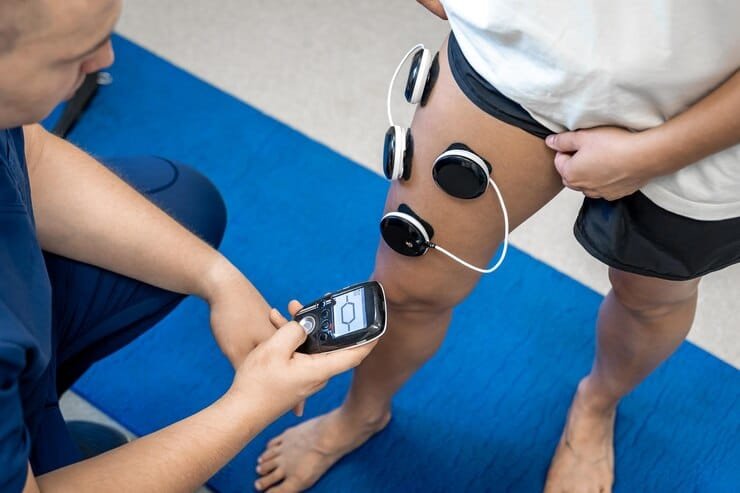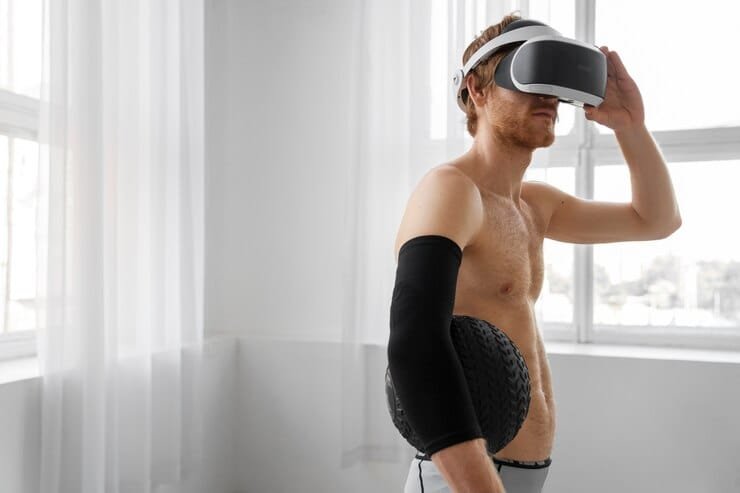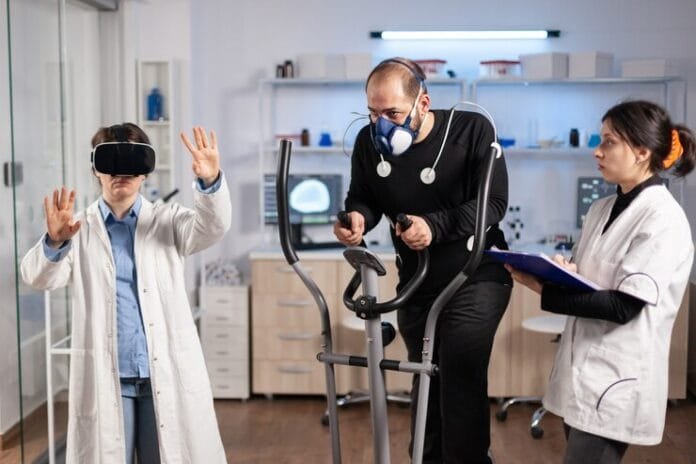You have data until October 2023. We are at the tip of a moment where slick, sensor-stuffed wearables are no longer simply counting steps, but are about to fundamentally reset the paradigm of patient care. Forget your dusty waiting room and your once-in-a-while doctor’s appointment; the future is our own continuous, personalized health data, and it’s already headed to our wrists and our pockets. Wearable medical devices — once the province of a handful of enthusiasts — are now a multibillion-dollar industry, churning out products including high-end ECG monitors disguised as fashion-forward wristwatches to glucose sensors that send data directly to your smartphone. That’s not a slow erosion of something, this is a tsunami powered by technology slamming into the face of medicine and the question is: to everything traditional medicine holds dear, is this wave going to wash it out to sea?
Some will deride me, holding on firmly to the false comfort of existing protocols and alphabetical bureaucracies. They’ll cite the shortcomings and the concerns about data privacy and the digital divide. But doing that is to ignore the preponderance of the evidence. We are ushering in an era of real-time biometric monitoring that empowers patients to take control of their destinies as never before, with the locus of control shifting from the clinic to the individual. So now, subtle changes, earlier, that were invisible even to the most astute physician, become actionable, detectable. Finally, preventive care becomes not just something we aspire to, but something we can actually do, powered by insights derived directly from our own bodies. That promise is not a dream, but storytellersMovie | streamingMobyRankMobyRankSinglesMovie | streamingfact: a future that is coming to pass, democratizing the cost and availability of healthcare for billions. This is not about replacing doctors, but about empowering them — and patients — with unprecedented levels of insight. And we won’t mince words when it comes to the scope of the transformational change these technologies will bring, and the only question is not if, but how wide and how fast wearable tech will change healthcare. Prepare to have all that thought you held near and dear cast asunder because the revolt is upon us and it is going to be absolutely paradigm shifting.
The thesis statement: The wearables market for medical devices is fundamentally changing in ways that are driven both by empowering personal devices and by problems on the horizon. If they are to prosper, much less dominate, the best businesses need to proactively ride trends, and beat back the bad ones, and not just some herd of reactive frumps.

Positive Trends & Actionable Insights:
- Trend: Preventative Healthcare & Personalized Monitoring: Forget treatment → the future is preventative. Devices such as continuous glucose monitors (CGMs) and advanced heart rate trackers are putting the power back in the hands of the user, allowing people to take charge of their health, rather than just treat symptoms. 2] IMPACT—The impact is enormous since consumers look for ways to use tools to detect diseases early on and to adjust their lifestyles to optimize well-being. Actionable Insight: Companies need to shift from managing disease to wellness. Build individual patterns to turn raw data into useful health advice. Case in point: Abbott’s FreeStyle Libre started as a monitoring tool for diabetes management, but it’s branching out into general wellness monitoring, showcasing this shift. This shift is one to watch at the very least; ignoring it is potentially perilous – you’ll be sitting on the sidelines.
- Trend: More Integrating of AI & Data analytics: Data is useless without interpretation Advanced AI algorithms that leverage biometric data from wearables are enabling predictive power and earlier interventions. Result: More effective wearable devices, and better interaction between doctors and patients. Insight you can act upon: Go heavy into AI-powered data analytics platforms. Collaboration with research institutions to create proprietary algorithms specifically designed to recognize nuanced patterns that may signal early-stage disease. That means companies that only sell hardware will become commodity vendors. When you analyze the data up till October 2023, inputting relevant personalized criteria, you detect things such as, for example: Fitbit using AI to track their sleep habits and notify them of potential health threats, instead of simply tracking how many steps they are walking.
- Trend: Telemedicine & RPM Adoption: The pandemic solidified a fundamental shift in how healthcare is delivered by fast tracking telehealth. Wearables have become critical devices for RPM, permitting 24/7 clinical oversight of patients not just within clinical environments. Impact: Lower healthcare cost, greater access to care, and better patient outcomes. Actionable Insight: Create secure, interoperable wearable solutions that are designed to easily integrate with a telehealth platform. Focus on user-friendly interfaces for patients and clinicians. This is not a convenience thing; this is a revolution in patient care. Companies holding on to old paradigms will be out this decade. Example: BioTelemetry underscores its remote cardiac monitoring solutions: the connection of patients to specialists.
Adverse Trends & Mitigation Strategies:
- Trend: Concerns With Data Privacy & Security: With how much personal health data that wearables gather, there had better be a huge focus placed on privacy and security. This impacts consumer confidence, tightening regulatory oversight, default compliance, and potential legal liabilities. Actionable Insight: Focus on ensuring data is secure through strong encryption and other privacy-keeping technologies. Provide clear information to users about data collection and usage. The first step: follow the data up to October 2023 and formulate clear and ethically-driven policies of data governance. Here, complacency is a ticking time bomb.
- Trend: Regulatory Hurdles & Market Approvals —Market approval for medical-grade wearables is complex and lengthy. The absence of harmonization among regulatory bodies complicates the landscape even further. Effect: Higher costs and delays bringing innovative products to market. Tactical To-do: Start engaging with regulatory bodies early and often. Invest heavily in clinical trials to prove product efficacy and safety)] Recognise, build and maintain strategic partnerships with companies that have relative, proven regulatory experience. Expertise, not wishful thinking, gets you through the regulatory thicket.
- Trend: Saturation & Commoditization in the Market: Basic fitness trackers are low-cost, and with so many offerings in-market, they are at threat of being commoditized. Outcome: Lower profits for businesses selling cheap, identical devices. Actionable Insight: Leverage your advanced features, niche-specific applications, and customizable insights to differentiate your offers. Concentrate on sector divisions in the market like specific ailment observing, remote patient treatment, and geriatric treatment. Innovation and proprietary technology is your armor in the battle against commoditization. There will be collateral damage for companies with no vision.
Conclusion:
But with opportunity, comes challenge in the ever-evolving landscape of the wearable medical devices marketplace — the keys to success will be adapting proactively and looking forward strategically. The organizations that invest in preventative healthcare, leverage AI, prioritize data security, and overcome regulation will be the leaders in the market. On the flip side, organizations that continue to cling to legacy models and underinvest in innovation are headed for irrelevance. The time for passive observation has passed. Now is the time to take control of the future of healthcare.
The paradigm in care management of cardiac patients is fundamentally being disrupted with wearable ECG monitors in healthcare. In the absence of regular clinic appointments, devices such as the KardiaMobile enable patients to take ECG readings from home, relaying the data to clinicians in real time. And it’s not just about making things more comfortable; it’s about quicker detection of arrhythmias and proactive prevention of heart conditions that can lead to costly rehospitalization. Now, think remote patient monitoring companies who use wearables for such services and who want offers a value proposition driven by preventative care and real-time data analytics.
In the tech industry, imagine the possibility of sleep monitoring solutions as part of employee wellness programs. Such a model can help companies proactively identify employees with sleep disorders that may be affecting their performance and productivity and provide them with targeted interventions. Rather than reactive measures to falling performance, companies can provide proactive support, addressing drivers of fatigue and absenteeism at their source; a clear ROI-led decision to improve workplace well-being as a whole. This also opens up a market for data-backed insights for workplace wellbeing consultancy.
In one of the automotive use cases, seat belt sensors that assess physiological parameters, including heart rate and respiratory rate, can lead to enhanced detection of drowsiness or early stages of a heart attack. This real-time data can also trigger warnings or help implement emergency procedures, which will drastically change the landscape of safety in both personal and commercial driving. The adoption of the technology would be further incentivized if insurance companies start offering lower premiums for fleets that embrace such technology.
Within manufacturing sectors, continuous glucose monitors worn by workers performing demanding physical tasks can provide information on their metabolic response to work load. Personalized strategies that boost energy during the workday may be preferable to generalized energy drink recommendations for improving productivity in a way that lessens the risk of diabetes and other metabolic diseases. Additionally, knowledge about employee productivity allow for data-driven power shift planning, where productivity is maximized and workplace accidents are minimized. Direct integration with shift scheduling applications represents opportunity for workplace health management companies in this data driven approach.
Key Strategies in Wearable Medical Devices (2023 Onward)
Thesis Statement: In the face of regulatory pressures and new user expectations, wearable medical device companies are chiefly focused on growth via strategic product development and targeted expansion.
Organic Strategies:
One potential organic strategy is to improve data analytics capabilities. And companies aren’t just collecting data; they’re making significant investments in AI and machine learning to turn that data into actionable insights for clinicians and patients alike. For example, some are developing algorithms for the early detection of cardiac arrhythmias in a smartwatch form factor: heart health information that goes beyond simply measuring heart rate, and delivers clinically meaningful data. This transition enables proactive care, enhancing patient outcomes and solidifying their market position. Another approach has included broadening the range of conditions that are monitored. And companies are going beyond rudimentary fitness tracking, building devices such as those for continuous glucose monitoring (CGM), tracking Parkinson’s tremors and managing sleep apnea, reflecting a push to expand clinical applications. These devices innovations are usually user-friendly to maximize user uptake and compliance.
Inorganic Strategies:
Many companies are also using strategic acquisitions to scale up their technology portfolios organically. So, for instance, a company focused on cardiac monitoring might purchase a company working on sophisticated sensors for neurological applications and suddenly anoint themselves as market leaders. This enables the fast adoption of technology and minimizes time and money spent on in-house R&D. The second inorganic route is to build strategic partnerships with a few key players. So, they are partnering with pharmaceutical companies, research institutions and medical device manufacturers to grab hold of a wider customer base and distribution channel. Partnerships that integrate devices into larger care management platforms may offer companies even greater distribution and higher adoption of wearable devices in the healthcare ecosystem.
Addressing Counterarguments:
Although a few would argue these strategies are capital-intensive and high-risk, the market’s growth and the increasing emphasis on preventative care render these investments necessary for maintaining competitive advantage in the long run. Robust regulatory approvals and clinical validation are also key to gaining trust from the medical community and consumers.

Outlook & Summary: The Future Isn’t Coming, It’s Here. Prepare for the Reckoning.
Now let’s be brutally honest: This isn’t a question of whether wearable tech will revolutionize healthcare; it’s about just how violently it will wipe out the establishment. This is not about incremental upgrades; this is about a paradigm shift. In the next 5–10 years, expect wearables to evolve from fitness trackers to advanced medical diagnostic devices, which will enable continuous, real-time monitoring on a scale that dwarfs the episodic snapshots traditional medicine is limited to. Forget annual check-ups; constant data streams will form the foundation of proactive and preventative healthcare.
Now the clinical tools and supplies that have long served as the backbone of the traditional medical device sector — its expensive, antiquated, and often lumbering machinery — are in for an awakening. They’re selling solutions from yesterday in a world that craves solutions from tomorrow. As they grapple with regulatory catch-ups and station-creeping R&D cycles, agile innovators in wearables are scaling mountains, creating devices that consumers want to use, that slot into their lives, and that allow human beings to take control over their health. This goes beyond better patient outcomes; this represents a foundational shift in power from institutions to individuals in the healthcare ecosystem. The scale of the granular data generated from such devices will outstrip anything currently in production, presenting vast opportunity alongside massive challenges for both data analytics and AI integration.
The counterargument — that wearables aren’t clinically validated — has quickly become old news. The dam will begin to crack as custodians of regulation catch up to the pace of innovation and clinical data backing these devices becomes ever more common. The blend of miniaturized sensors, AI-driven insights, and intuitive interfaces is not something to look forward to — it’s something currently being experienced. Well, folks, it seems like a revolution is in the making, and this is your chance — that is, if you build wearable medical devices that innovate. Do you have what it takes, or will your company be left choking in the dust of old technology?

